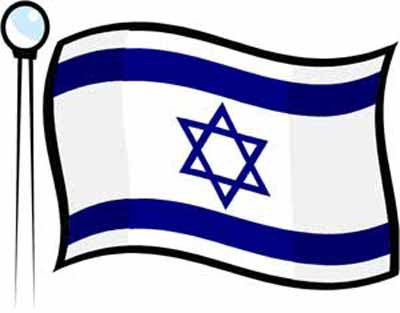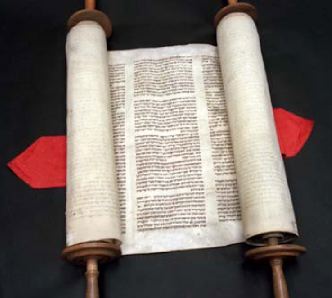Orthodox Judaism
Sunday, February 5, 2012
How and where did this particular branch develop?
How does your sect differ from the other branches within the major religion?
Orthodox Judaism was founded long before Reform and Conservative Judaism. Their veiw of their scrippture is that the Torah is truth, and man must have faith in its essential and revealed character. Orthodox Jews also believe that a true Jew believes in revelation and the divine origin of the oral and written
Torah. They strictly follow all the traditional Jewish laws and rules and pray three times daily. Orthodox Jews also do not believe in “original sin.” They believe God is spirit rather than form, too.
When they are in the Synagogue, all prayers are recited in Hebrew. Men and women sit separately and the officiants
face the same direction as the congregants. About 14% of all Jews are Orthodox Jews.
| Category | Orthodox (14%) | Conservative (40%) | Reform (35%) |
| History | Orthodoxy dates back to the days of the Talmud (2nd to 5th centuries). It was the only form of Jewish practice prior to the 18th century and the emergence of Reform Judaism. Orthodoxy today seeks to preserve classical or traditional Judaism. | Conservative Judaism emerged in 19th Century Germany as a reaction to the extreme assimilationist tendencies of Reform Judaism. It tried to be a middle ground, attempting to maintain basic traditions while adapting to modern life. | Reform Judaism emerged following the emancipation from ghetto life in the late 18th century. It sought to modernize Judaism and thus stem the tide of assimilation threatening German Jewry. |
| Other Terms | Traditional or Torah Judaism | Historical Judaism | Liberal or Progressive Judaism |
| View of Scripture | Torah is truth, and we must have faith in its essential, revealed character. A true Jew believes in revelation and the divine origin of the oral and written Torah. | The Bible is the word of God and man. It is not inspired in the traditional sense but rather dynamically inspired. Revelation is an ongoing process in the evolutionary sense. | Revelation is a continuous process. Torah is a human document preserving the history, culture, legends and hope of a people. It is valuable for deriving moral and ethical insights. |
| View of God | God is spirit rather than form. He is a personal God: omnipotent, omniscient, omnipresent, eternal and compassionate. | The concept of God is non-dogmatic and flexible. There is less atheism in Conservative Judaism than in Reform, but most often God is considered impersonal and ineffable. | Reform Judaism allows a varied interpretation of the "God concept" with wide latitude for naturalists, mystics, supernaturalists or religious humanists. It holds that "the truth is that we do not know the truth." |
| View of Man | People are morally neutral, with good and evil inclinations. They can overcome their evil bents and be perfected by their own efforts in observation of the Law. | This group tends towards the Reform view, though it is not as likely to espouse humanism. Perfectibility can come through enlightenment. Humanity is "in partnership" with God. | Human nature is basically good. Through education, encouragement and evolution humans can actualize the potential already existing within them. Humankind may be God. |
| Category | Orthodox | Conservative | Reform |
| View of Sin | Orthodox Jews do not believe in "original sin." Rather one commits sin by breaking the commandments of the Law. | Conservative Jews do not believe in a sin nature. The individual can sin in moral or social actions. | Reform Jews do not believe in "original sin." Sin is reinterpreted as the ills of society. |
| View of Salvation | Repentance (belief in God’s mercy), prayer and obedience to the Law are necessary for salvation. | Conservative Jews tend toward the Reform view but include the necessity of maintaining Jewish identity. | Salvation is obtained through the betterment of self and society. |
| View of the Tradition of the Law | The Law is the essence of Judaism. It is authoritative and gives structure and meaning to life. The life of total dedication to Halakhah leads to a nearness to God. | Adaptation to contemporary situations is inevitable. The demands of morality are absolute. The specific laws are relative. | The law is an evolving ever-dynamic religious code that adapts to every age. They maintain, "If religious observances clash with the just demands of civilized society, then they must be dropped." |
| View of Messiah | The Messiah is a personal, superhuman being who is not divine. He will restore the Jewish kingdom and extend his righteous rule over the earth. He will execute judgment and right all wrongs. | Conservative Jews hold much the same view as the Reform. | Instead of belief in Messiah as a person or divine being, they favor the concept of a Utopian age toward which mankind is progressing. |
| View of Life After Death | There will be a physical resurrection. The righteous will exist forever with God in the Garden of Eden. The unrighteous will suffer, but disagreement exists over their ultimate destiny. | Conservative Jews tend toward the Reform view, but are less influenced by Eastern thought. | Generally, Reform Judaism has no concept of personal life after death. They say a person lives on in the accomplishments or in the minds of others. There is some influence of Eastern thought where souls merge into one great impersonal life force. |
| Distinctives in Synagogue Worship | The synagogue is a house of prayer; study and social aspects are incidental. All prayers are recited in Hebrew. Men and women sit separately. The officients face the same direction as the congregants. | The synagogue is viewed as the basic institution of Jewish life. Alterations listed under Reform are found to a lesser degree in Conservative worship. | The Synagogue is known as a "Temple." The service has been modernized and abbreviated. English, as well as Hebrew, is used. Men and women sit together. Reform temples use choirs and organs in their worship services. |
| Books to Read | A. Cohen, Everyman’s Talmud (1932); S. Schecter, Some Aspects of Rabbinic Theology (1936) | Conservative Judaism (1945); Mordecai Waxman (editor), Traditon and Change (1958); Robert Gordis, M. Sklare, Conservative Judaism (1965) | S. B. Freehof, Reform Jewish Practice and Its Rabbinic Background (1963); J. Wolf (editor), Rediscovering Judaism (1963) |
How does this monotheistic religion differ from the other two major monotheistic religions?
Orthodox Judaism differs from the other two major mothotheistic religions is several ways.
Prophet:
- Judaism: Moses
- Christianity: Jesus Christ
- Islam: Muhammad

Prophet:
- Judaism: Moses
- Christianity: Jesus Christ
- Islam: Muhammad
Scripture/Holy book:
- Judaism: Torah
- Christianity: Bible
- Islam: Qur'an
House of Worship:
- Judaism: Synagogue
- Christianity: Church or Cathedral
- Islam: Mosque
Main day of worship:
- Judaism: Saturday
- Christianity: Sunday
- Islam: Friday
Sects/Branches:
- Judaism: Reform Conservative, Orthodox, and Reconstructionist
- Christianity:Catholic, Orthodox, and Protestant
- Islam: Sunni and Shia
Holy city:
- Judaism: Jerusalem
- Christianity: Jerusalem
- Islam: Mecca
Perspective on Jesus:
Judaism: not the Messiah
Christianity: the son of God
Islam: prophet before Muhammad, highly respected

Friday, February 3, 2012
What traditions or rituals do they follow? List and describe at least 3.
The
traditions and rituals are Brit Hayyim, Kiddushin, and Bar Mitzvah. The Orthodox Jews do not celebrate Bat Mitzvah.
Brit Hayyim- a naming ceremony for baby girls, it also takes place on the 8th day of life.
Kiddushin- the Jewish marriage ceremony
Bar Mitzvah- a ceremony for boys at the age of 13, making a Jewish boy enter the community as an adult. "Bar Mitzvah" means “son of the Commandment.”
Link:
The Bar Mitzvah- http://www.5min.com/Video/The-Bar-Mitzvah-Ceremony-35862535
Brit Hayyim- a naming ceremony for baby girls, it also takes place on the 8th day of life.
Kiddushin- the Jewish marriage ceremony
Bar Mitzvah- a ceremony for boys at the age of 13, making a Jewish boy enter the community as an adult. "Bar Mitzvah" means “son of the Commandment.”
Link:
The Bar Mitzvah- http://www.5min.com/Video/The-Bar-Mitzvah-Ceremony-35862535
What is the place of worship? What are the major features of this place? (details of architecture, how it is decorated, what the place is called)
The place of worship for the Orthodoz Judaism religion is a "shul", a Yiddish word for Synagogue. Synagogues always contain an ark, for where the Torah scrolls are kept. Located in the center of the synagogue, the bimah is the raised platform on which the Torah is read. Ancient Jewish art is also represented in synagogues.
Subscribe to:
Posts (Atom)


